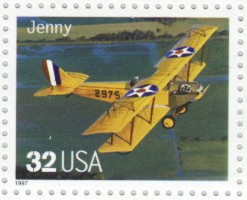Bessie Coleman
Today, let's meet the first black woman to fly. The University of Houston's College of Engineering presents this series about the machines that make our civilization run, and the people whose ingenuity created them.
It should be no surprise that the first two black Americans to win flying licenses did so under unusual circumstances. First was Eugene Bullard. He joined the French Foreign Legion during WW-I. Then he managed to transfer to the French flying service.
But the more remarkable tale is that of Bessie Coleman. Coleman was born around 1892, the thirteenth child in the family, and raised in Waxahachie, Texas. Her family lived on the edge of poverty, picking cotton in a region of lynchings and a highly active Ku Klux Klan. This was Black America's darkest hour.
But Bessie was smart and determined. She learned to read. She got books from a local lending library and read to her family at night: first the Bible, then Uncle Tom's Cabin and books about Booker T. Washington and Harriet Tubman. She finished the eighth grade and a term at a black normal school in Oklahoma. Back in Waxahachie, she did laundry and dreamt of a larger life.
During WW-I, she packed off to Chicago. For four years she worked as a manicurist and read about the new heroes of flight in France. She wanted to fly, but no American flying school would have her. So she mastered French in night school. She saved her money and, in 1921, sailed for France. She managed to enroll in the Coudron Brothers' famous School of Aviation.
There she flew Nieuports -- the same airplane my father had so loved to fly when he flew in France two years before her. Like him, she described the smell of castor oil and the heat of the engine. She graduated in 1922 and returned to America.
It was now a different country for her. She'd been licensed to fly by the best. She joined into the community of black intellectuals in the Harlem of the '20s. And she hatched a plan to set up her own flying school. Next year she was back in Europe drumming up support for the idea. Anthony Fokker entertained her in Holland. He showed her his airplane factories and vowed his support. Former German pilots entertained her in Berlin.
She barnstormed America to raise money for the project. She became a darling of the white press. Back in Texas in 1925, she did air shows in Houston and Dallas. She went back to Waxahachie for a show. The gates and bleachers were to be segregated. She drew a line. No show unless black and white entered by the same gate. Of course, the bleachers stayed segregated.
1926 found her scouting a parachute-jump site in Jacksonville. The controls of her Curtis Jenny locked. The plane spun and she fell 2000 feet to her death. She was only 34. And all that remained of Bessie Coleman, hanging in the clear above her, was a huge legacy of loving life -- and an inspiration to us all.
I'm John Lienhard, at the University of Houston, where we're interested in the way inventive minds work.
(Theme music)
Freydberg, E.H., Coleman, Bessie (1896-1926). Black Women in America: An Historical Encyclopedia (Darlene Clark Hine, ed.). New York: Carlson Publishing Inc., 1993, pp. 262-263.
Rich, D.L., Queen Bess: Daredevil Aviator, Washington, D.C.: Smithsonian Institution Press, 1993.
Hardesty, V., and Pisano, D., Black Wings, Washington, D.C., National Air and Space Museum, Smithsonian Institution, 1984. See especially, p. 6.
Moolman, V., Women Aloft, Alexandria, VA: Time-Life Books, 1981, pp. 43-45
I am grateful to Dr. Linda Reed, Director of the UH African American Studies Program, for information on Bessie Coleman; and to Waxahachian Margaret Culbertson for additional advice and for locating the important Queen Bess source.

The Curtiss Jenny